In the years it was in production, GM made several incremental improvements to the F3. By August 1948, those improvements were significant enough that the company internally called locomotives built after that time F5s. However, in public they were still called F3s. I have five data cards or postcards for locomotives that would qualify as F5s.
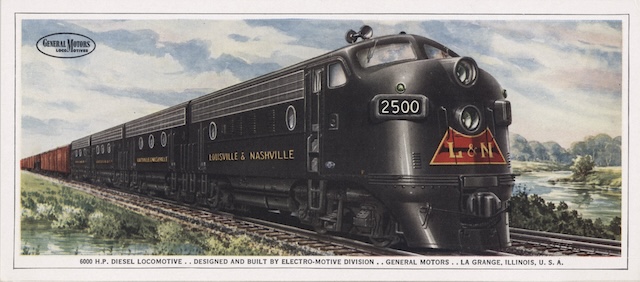
Ben Dedek’s signature is barely discernible in the center left of the picture.
Louisville & Nashville purchased two A units (numbered 2500 and 2501) and three B units (numbered 2550 through 2552) that were delivered in August 1948. The painting on the card shows them running as a four-unit set, which would have left one of the B units out. Although I can’t find any photographic evidence, I wonder if they were initially run as A-B and A-B-B sets.
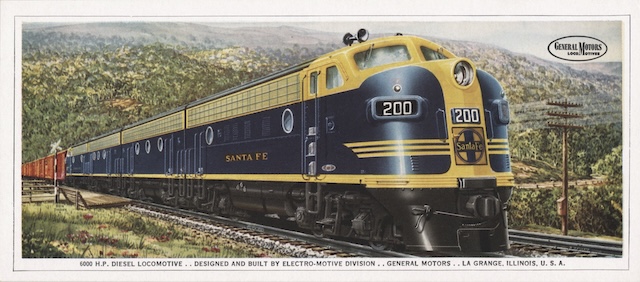
This card is signed by Ben Dedek.
The first Santa Fe F3s in freight colors were delivered in October 1948. Santa Fe owned a total of 93 F3s, but most, I believe, were in passenger colors.
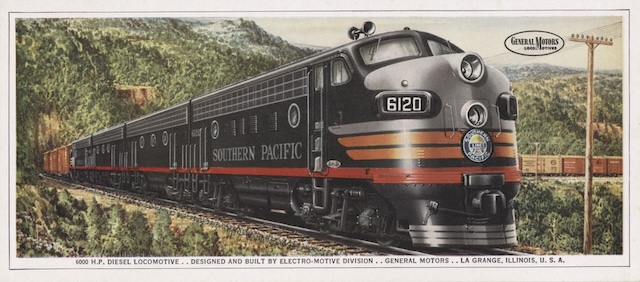
This card is signed by Harry Bockewitz.
In October 1948, GM delivered the first of what would be 160 (40 four-unit match-ups) to Southern Pacific. As previously mentioned UP, SP, and Pennsylvania hadn’t purchased any FTs so they played catch-up by buying more F3s than any of the other railroads.
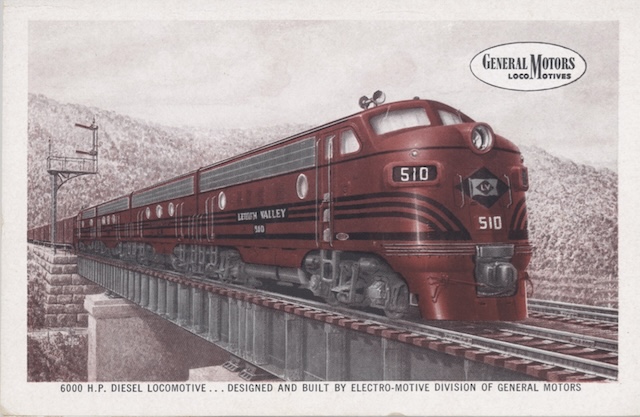
This card is signed by Ben Dedek.
Here’s a postcard-sized ad featuring Lehigh Valley F3s, the first of which were delivered in October 1948. Lehigh ordered 20 in all. The back of the card contains no data and the text is far less technical than is on the regular data cards.
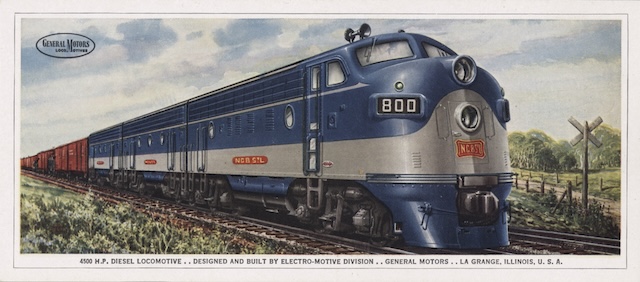
I don’t see a signature but this looks like Ben Dedek’s art work.
This Louisville & Nashville subsidiary received its first F3s in December 1948, just before General Motors switched to production of F7s. Did they experience the same buyer’s remorse felt by people who buy a smart phone or computer just before the manufacturer announces a major upgrade? It’s possible; many railroads that purchased F3s later had them upgraded to F7s.

The L&N units were bought to be used as pushers on coal trains over Elkatawa Hill in eastern Kentucky. They were painted in the solid black paint so they wouldn’t upset the coal miners. L&N was still buying new steam engines when the F3s were delivered. Photos I have seen show them being used as ABB sets.
The story told in many L&N related books and magazine articles is that a coal miner’s strike released the F3s for other uses and they were tested all over the system which opened L&N management’s eyes to how much better diesels were over the L&N’s mostly pre-depression steam engines.